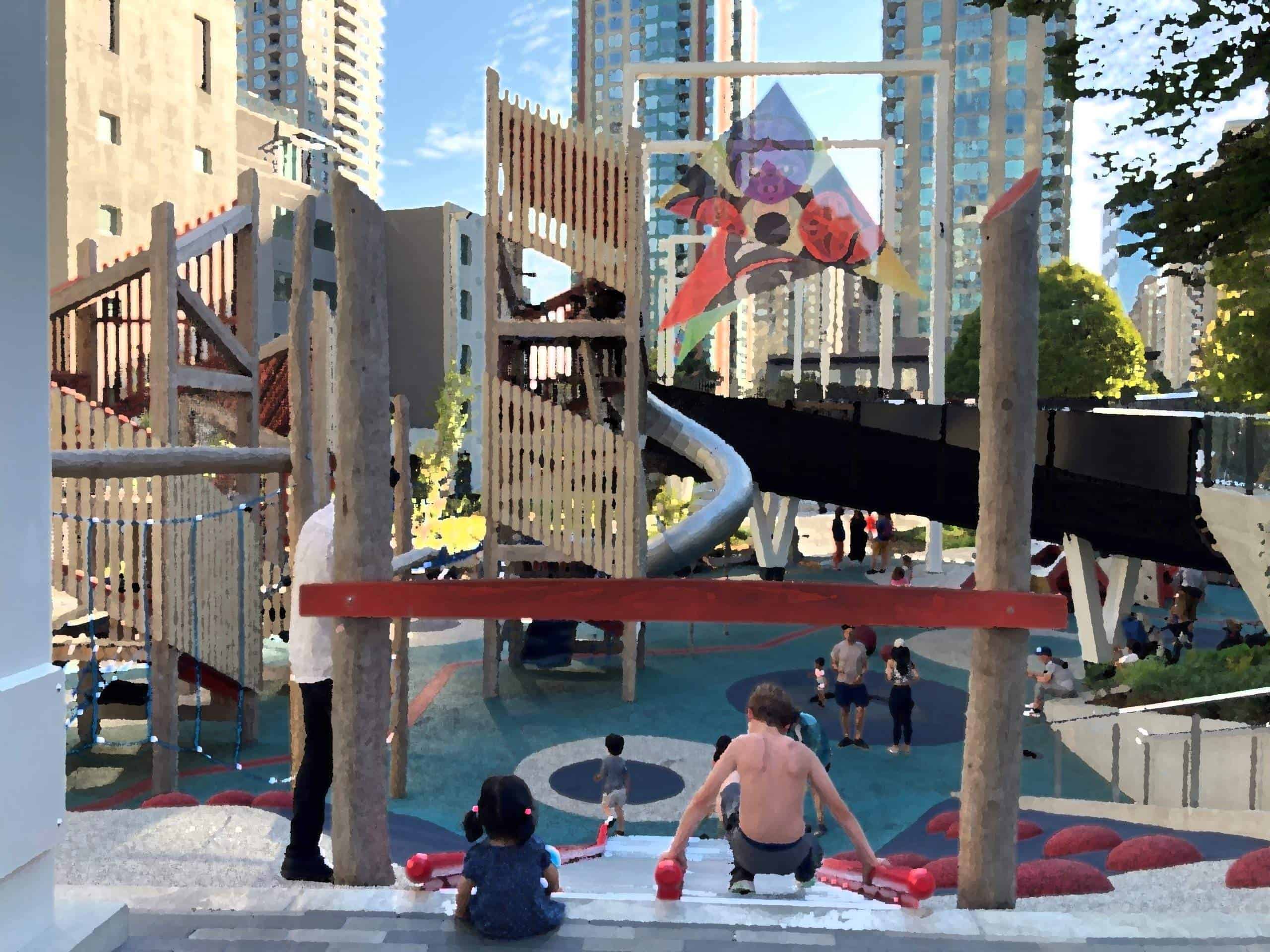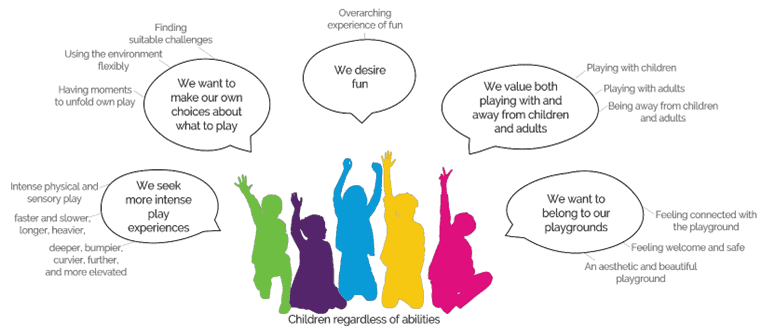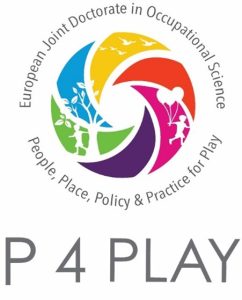
Unpacking children’s desires and wishes in outdoor play on playgrounds – Insights from a scoping review.
Thank you to Thomas Morgenthaler, PhD student in Occupational Science and Occupational Therapy at University College Cork and Queen Margaret University, for providing this post.
If you were to visit your local playground and ask several children what they like about it, you would likely hear a common response repeated over and over again: “It’s so much fun!“
To further unpack and understand what this fun experience means and how other experiences contribute to fun playgrounds we conducted a scoping review. In this scoping review, we aimed to review play experiences of children with and without disabilities to gain an understanding of how social and physical environmental qualities enable meaningful outdoor play experiences in community playgrounds (public and school playgrounds). In total 51 qualitative, quantitative, and mixed-method peer-reviewed articles were included in the synthesis from a variety of different disciplines.
What we discovered
In the findings we learned that children want to experience a variety of multifaceted play experiences including the desire for fun, suitable challenges, and intense motor and sensory play; the wish to self-direct their play; opportunities to play alone and with relatable peers of similar sex/interest/ability; and a desire for welcoming, safe, and aesthetically pleasing playgrounds. See figure 1 for details of formed themes and play experiences.

Figure 1. Themes and subthemes of the scoping review
We further examined how these multifaceted play experiences relate to the physical and social environment in combination. These environmental qualities give guidance in terms of how playgrounds can provide high play value to all children regardless of ability. For example, within the theme of ‘we value both playing with and away from children and adults’, multi-player equipment and small and enclosed spaces as well as availability of peers and less adult surveillance were important physical and social components, respectively, of the environment. For more detail on how the social and physical environment relates to what children want to experience, check out table 4 in the scoping review.
Are there differences between children with and without disabilities?
When we compared findings between children with and without disabilities, we did not find any differences in terms of what children desired to experience in their outdoor play on playgrounds.
However, the environmental qualities of playgrounds are not always welcoming to children with disabilities, often due to a lack of variety in suitable challenges, and because of social and physical barriers such as inaccessibility, othering practices, or the reliance on adult support for play.
What gaps in research were identified
We further found that studies rarely included children with disabilities and children without disabilities together in playground research (only 6 of 51 studies). This leads to the question of how to further advance inclusive playground development and provision of a diversity of perspectives that are currently not included in research and likely excluded from practice and policy as well.
Another finding was that included studies of children with disabilities focused more on the built environment such as play equipment or surfacing but other environments like the natural environment (including natural loose parts) were rarely researched. Our findings point out that studies that researched perspectives from children without disabilities explored to a much greater extend play affordances of natural environments from the child’s perspective. This highlights the necessity for further investigation on how natural environments can be made available to all children on community playgrounds.
Take home message
This scoping review exemplifies that much can be learned from children regardless of ability. One crucial message that emerged from this review is that children’s perspectives need to be included more in playground provision, design, and evaluation. Children are the experts in their play and adult stakeholders need to find solutions to give them voice and influence. Moreover, playground provision, design and evaluation should move beyond just the physical aspects of the playground and consider creating what children want to experience. By taking these steps, we can create playgrounds that truly meet the needs and desires of the children and communities who use them.
Access the full study here: Environmental Qualities That Enhance Outdoor Play in Community Playgrounds from the Perspective of Children with and without Disabilities: A Scoping Review
References
Morgenthaler, T., Schulze, C., Pentland, D., & Lynch, H. (2023). Environmental Qualities That Enhance Outdoor Play in Community Playgrounds from the Perspective of Children with and without Disabilities: A Scoping Review. International Journal of Environmental Research and Public Health, 20(3), 1763. https://doi.org/10.3390/ijerph200
Thomas Morgenthaler is a PhD Student in Occupational Science and Occupational Therapy in a European funded PhD project called P4Play. The eight P4Play PhD projects focus on different facets of children’s play occupations. Thomas’ and his supervisors’ (Prof. Christina Schulze, Dr. Duncan Pentland, and Dr. Helen Lynch) research focuses on environmental analysis of playgrounds and instrument development with a focus on play value in playgrounds and how play value can be conceptualized for all children regardless of ability. 
This project has received funding from the European Union’s Horizon 2020 research and innovation programme under the Marie Sklowdowska-Curie grant agreement No 861257
Cover photo by Thomas Morgenthaler.

